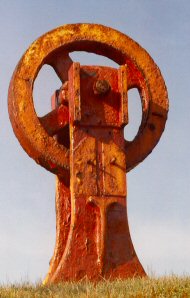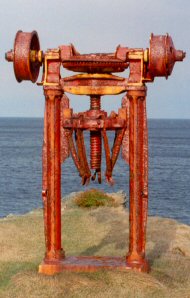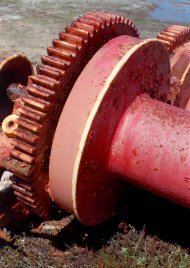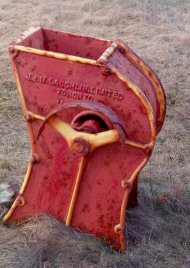Sleepy Cove
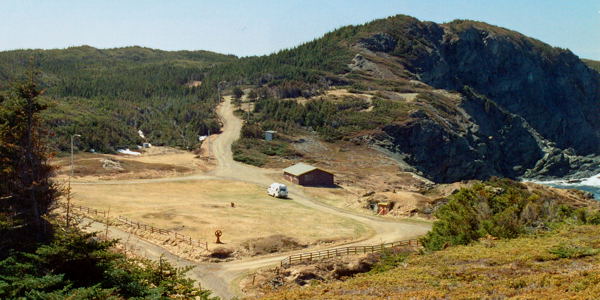
Sea Breeze Park bij Sleepy Cove.
Onze meest favoriete (kampeer)plek op Newfoundland is toch wel Sea Breeze Park bij Sleepy Cove. Tijdens al onze vakanties hebben we deze fraai gelegen plek bij Crow Head (Twillingate) bezocht en meerdere malen hebben we er met een tent of motorhome ook gekampeerd en genoten van voorbijtrekkende ijsbergen, walvissen, orka's en naar vis duikende Jan-van-Genten. En ... de mooiste zonsondergangen zie je vanaf Sleepy Cove.
Het is een plek met geschiedenis, want in de vorige eeuw bevond zich hier een kopermijn. De rood-geel geschilderde restanten van machines, die op het terrein zijn achtergebleven, zijn de stille getuigen van deze kortstondige industriŽle activiteit.
Er is niet veel bekend over de geschiedenis van de Sleepy Cove mijn bij Twillingate. De mijn is niet lang productief geweest. Desondanks bestaan er nog voldoende bronnen met informatie om een beeld te schetsen van de opkomst en ondergang van deze mijn. Een van die bronnen is "Once Upon A Mine : Story of Pre-Confederation Mines on the Island of Newfoundland" door Wendy Martin, waarin over Sleepy Cove het volgende te lezen valt:
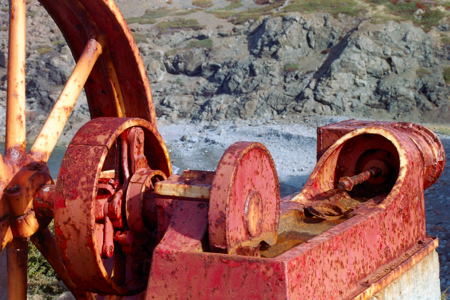
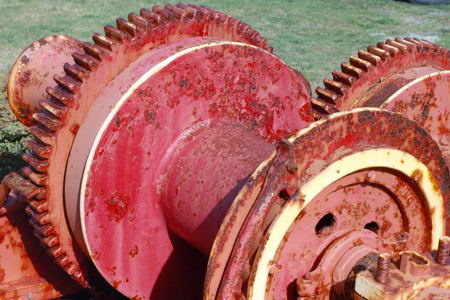
In 1905, Obediah Hodder of Pennsylvania revisited his birthplace at Crow Head on Twillingate Island and, while exploring his old haunts, happened upon a copper prospect that he had found as a child. That was the newspaper version of the discovery on the Crow Head or Sleepy Cove mine.
Another story described how Hodder's father spotted the ore while searching for net ballast. The facts are the Obediah's father, James, and brother, Edgar, staked the Sleepy Cove orebody with other men in the early 1900s and sold it to Obediah around 1906 for $5000 and a 20-cents-per-ton royalty. He then incorporated the Great Northern Copper Company Limited and transferred the claim to the firm.
Like many of his contemporaries, Obediah Hodder clung to the belief that a sophisticated surface outlay could compensate for an indifferent mineral deposit. Disregarding the Sleepy Cove orebody's limited size and copper content, he spent $225,000 on importing the latest mine equipment from the United States. Older Twillingate residents can recall its arrival by steamship in the fall of 1908; Crow Head men still relate the problems in hauling it piece by piece over the snow from Twillingate to the mine site using horses and sleds.
To obtain an idea of how the Sleepy Cove mine appeared in its prime, one can look in the Crow Head Town Hall at Melvin Sharpe's colourful mural of the old site. One wood-burning steam engine hoisted the ore up the shaft. Another ran the cable cars along the tramway between the shaft and the crusher. A turntable centrifuged the ore from the barren rock, and yet another steam-powered tramway carried the ore to the wharf.
For all its impressiveness, the machinery had little chance to perform. Of the three ships that came to remove ore, one carried 560 tons to an unknown destination in 1910; another abandoned loading operations after high winds drove it onto rocks; and a third took ore to New York where it sat unclaimed for months before the American Smelting and Refining Company bought it in 1915 or 1916.
Obediah Hodder stopped mining around 1917 to start up a cooperage in Twillingate, but later returned to Pennsylvania. His abandoned mining and cooperage machinery lay rusting until the Crow Head Town Council gathered it together and transformed it with crimson and yellow paint into playground equipment for children of the village.
